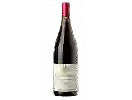
Winery Réthoré DavyTemps d'M Blanc
This wine generally goes well with pork, vegetarian or poultry.
Wine flavors and olphactive analysis
On the nose the Temps d'M Blanc of Winery Réthoré Davy in the region of Loire Valley often reveals types of flavors of apples, tree fruit.
Food and wine pairings with Temps d'M Blanc
Pairings that work perfectly with Temps d'M Blanc
Original food and wine pairings with Temps d'M Blanc
The Temps d'M Blanc of Winery Réthoré Davy matches generally quite well with dishes of pork, game (deer, venison) or rich fish (salmon, tuna etc) such as recipes of fricadella, duck breast in the oven or grilled tuna with mediterranean marinade.
Details and technical informations about Winery Réthoré Davy's Temps d'M Blanc.
Discover the grape variety: Viognier
White Viognier is a grape variety that originated in France (Rhone Valley). It produces a variety of grape specially used for wine making. It is rare to find this grape to eat on our tables. This variety of grape is characterized by small bunches, and grapes of small size. White Viognier can be found in many vineyards: South West, Languedoc & Roussillon, Cognac, Bordeaux, Rhone Valley, Burgundy, Jura, Champagne, Savoie & Bugey, Provence & Corsica, Loire Valley, Beaujolais.
Last vintages of this wine
The best vintages of Temps d'M Blanc from Winery Réthoré Davy are 2015, 2013
Informations about the Winery Réthoré Davy
The Winery Réthoré Davy is one of of the world's greatest estates. It offers 28 wines for sale in the of Loire Valley to come and discover on site or to buy online.
The wine region of Loire Valley
The Loire Valley is a key wine region in western France. It follows the course of the Loire River on its Long journey through the heart of France, from the inland hills of the Auvergne to the plains of the French Atlantic coast near Nantes (Muscadet country). Important in terms of quantity and quality, the region produces large quantities (about 4 million h/l each year) of everyday wines, as well as some of France's greatest wines. Diversity is another of the region's major assets; the styles of wine produced here range from the light, tangy Muscadet to the Sweet, honeyed Bonnezeaux, the Sparkling whites of Vouvray and the juicy, Tannic reds of Chinon and Saumur.
The word of the wine: Malolactic fermentation
Called second fermentation or malo for short. It is the degradation (under the effect of bacteria) of the malic acid naturally present in the wine into milder, less aggressive lactic acid. Some producers or wineries refuse this operation by "blocking the malo" (by cold and adding SO2) to keep a maximum of acidity which carries the aromas and accentuates the sensation of freshness.














